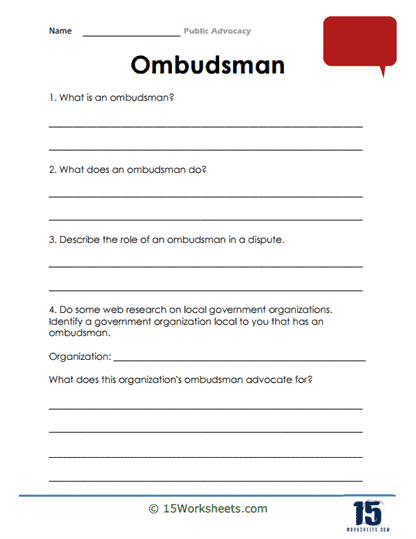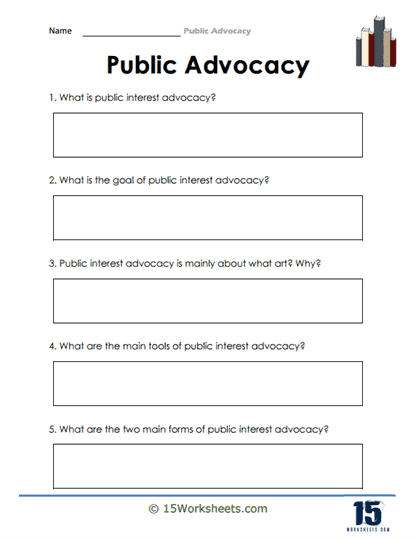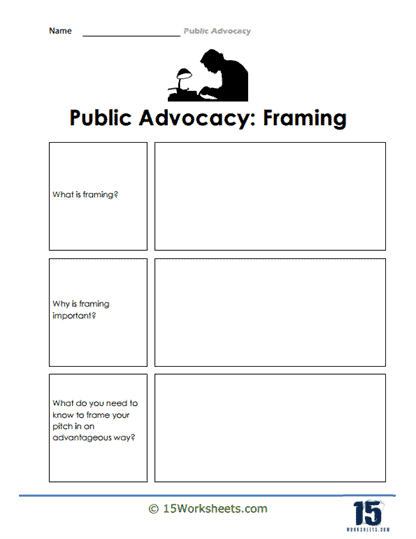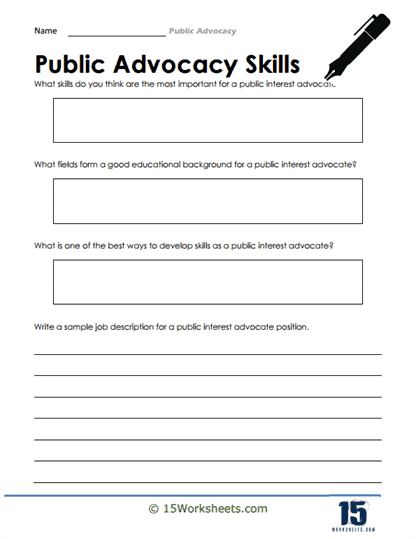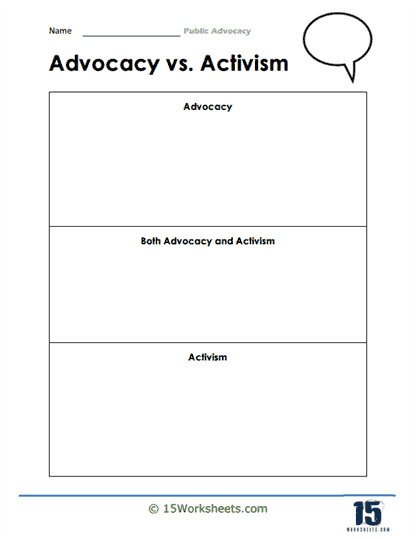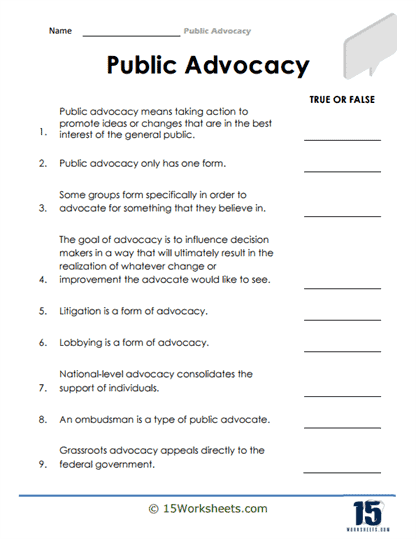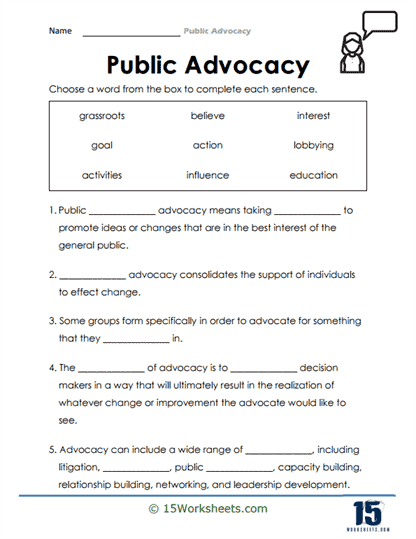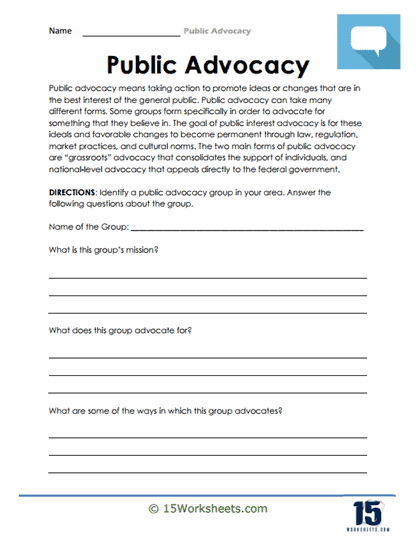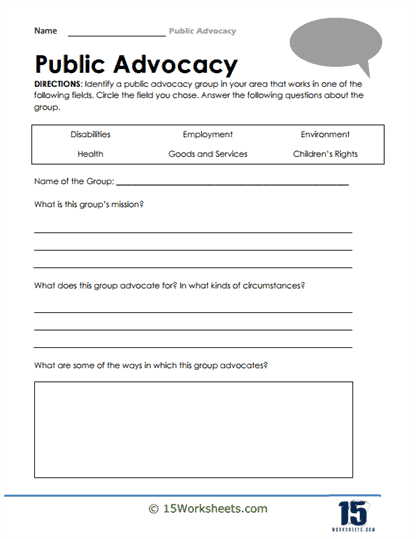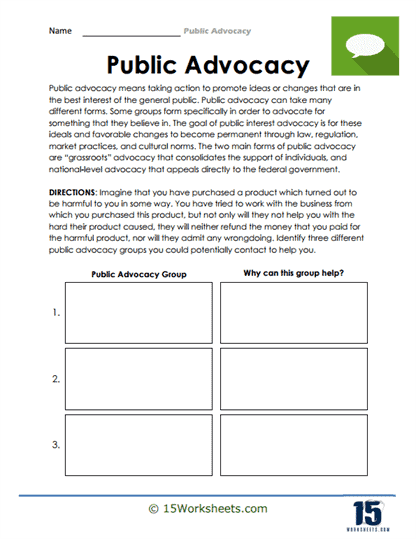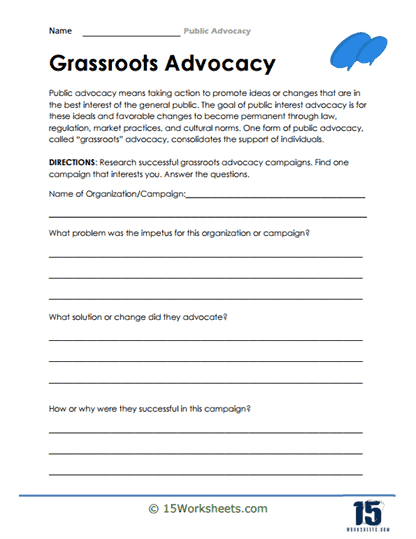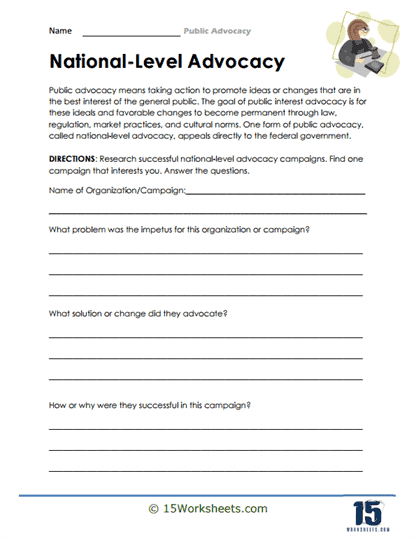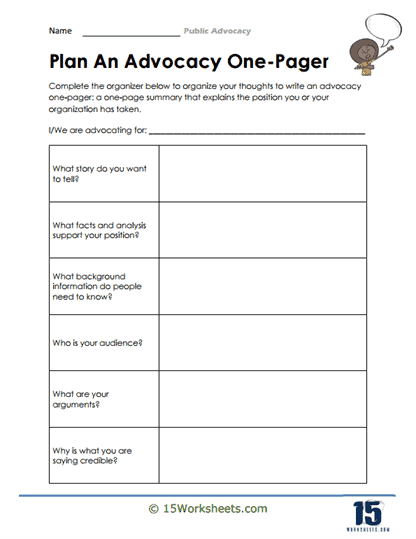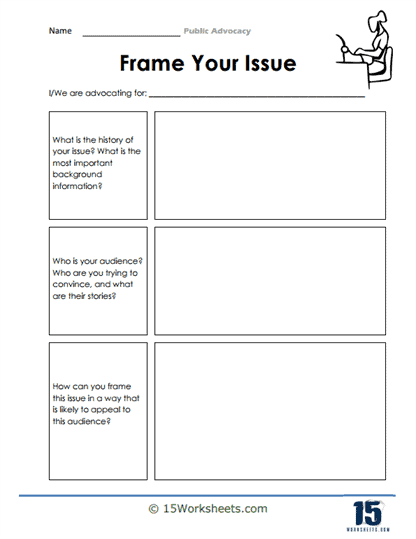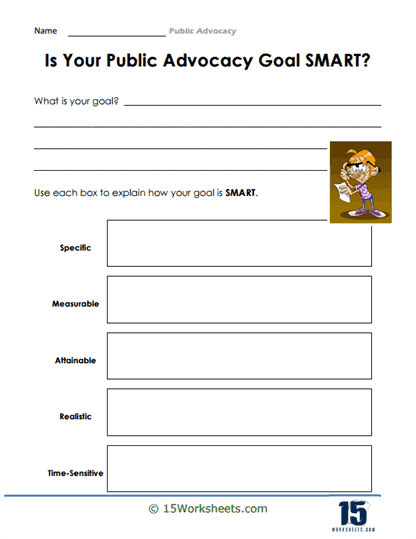Public Advocacy Worksheets
All About These 15 Worksheets
This collection of worksheets on Public Advocacy is a valuable resource for students, offering them a comprehensive introduction to the importance of civic engagement and advocacy in today’s society. These worksheets cover a wide range of topics, from understanding the basics of advocacy and its role in democracy to practical exercises in crafting persuasive arguments and communicating effectively.
Public Advocacy is a crucial skill for students to develop as it empowers them to become informed, active citizens who can drive positive change in their communities and beyond.
By engaging with these worksheets, students will not only gain a deeper understanding of the democratic process but also enhance their critical thinking, communication, and problem-solving skills, preparing them to be responsible and effective advocates for the causes they believe in.
Students embark on an inspiring journey of civic engagement and social impact with this comprehensive series of Public Advocacy worksheets. This engaging series is designed to equip students with the knowledge, skills, and strategies necessary to become effective advocates for causes they care about.
Through thought-provoking activities, case studies, and critical analysis, students will explore the principles, techniques, and real-world applications of public advocacy. From understanding the role of an ombudsman to honing framing techniques and crafting SMART goals, this collection empowers students to navigate the complexities of public advocacy and make a difference in their communities.
Through these worksheets, students will:
- Be introduced to the concept of public advocacy, its significance, and its role in fostering positive change in society;
- Develop a foundational understanding of the key principles and ethical considerations involved in public advocacy;
- Explore the power of framing and messaging in effective advocacy;
- Figure out the essential skills and background needed for effective public advocacy;
- Examine the similarities, differences, and overlapping aspects between advocacy and activism, gaining a nuanced understanding of these related but distinct approaches to social change;
- Dive into grassroots advocacy, realizing the power of collective action and community organizing in driving social change;
- Explore the realm of national-level advocacy, examining the methods and challenges involved in influencing policy and legislation on a broader scale;
- Develop an advocacy one-pager, a concise and impactful document that communicates their advocacy goals, key messages, and supporting evidence;
- Learn the art of framing an issue effectively by considering different perspectives, understanding target audiences, and utilizing persuasive techniques;
- And try their hand at SMART goal-setting framework which will guide them in formulating specific, measurable, achievable, relevant, and time-bound goals for their advocacy initiatives.
Through this series of Public Advocacy worksheets, students will develop the knowledge, skills, and critical thinking abilities needed to become effective agents of change. From understanding the foundations of public advocacy to honing framing techniques, developing advocacy skills, and exploring different levels of advocacy, these engaging activities empower students to make a meaningful impact on social issues. By equipping students with the tools and strategies necessary to navigate the complexities of public advocacy, this collection nurtures active citizenship and cultivates a sense of agency, enabling students to advocate for positive change in their communities and beyond.
What Is Public Advocacy?
Advocacy is not a new concept. The act of advocating for a cause or belief can be traced back centuries. However, the term “public advocacy” has only been around for about 25 years, and its meaning is still being refined.
Simply put, public advocacy is using your voice to speak up on behalf of others – whether they are able to do so themselves or not. It is promoting the interests of others in the public arena and striving to create change in order to improve their lives. Public advocates can work at all levels of government, from city hall to parliament, or in any field that affects the public interest.
Whether it’s working to end poverty or fighting for human rights, public advocacy aims to make the world a better place.
What Are the Different Types of Public Advocacy?
There are many different types of public advocacy, from speaking out about an issue to volunteering for a cause. Some of these include:
- Education Advocacy – It involves raising awareness about a particular issue and providing information about it.
- Direct Action Advocacy – It involves everything from organizing protests to writing letters to elected officials.
- Lobbying – It involves directly connecting with politicians and policy-makers in an effort to influence their decision-making. This can be done through in-person meetings, phone calls, emails, or even social media. Lobbying can be an effective way to bring attention to an issue and pressure decision-makers to take action.
- Media campaigns – This involves using various forms of media (such as television, radio, print, or online) to raise awareness about an issue and rally support for a cause. Media campaigns can be a powerful way to reach a large audience and generate buzz around an issue.
What Are the Benefits of Public Advocacy?
Advocacy can be an important tool for bringing about social change. It can raise awareness of issues and mobilize people to take action. In some cases, it can also lead to direct changes in laws or policies.
For example, public advocacy was instrumental in the passage of the Civil Rights Act of 1964. By speaking out and mobilizing others, advocates were able to pressure lawmakers to pass this groundbreaking legislation.
Today, public advocacy continues to be an important force for change. Through the power of their voices, advocates can bring attention to important issues and make a difference in their communities.
How Can You Get Involved in Public Advocacy?
There are many ways to get involved in public advocacy. One way is to join or start a grassroots organization. These organizations are typically made up of volunteers who work to raise awareness about a particular issue and lobbying for change.
Another way to get involved is to donate money or time to a cause you care about. This can include giving money to support a specific politician or organization, or volunteering your time to help with campaigns or petitions.
Finally, you can also use your voice to speak out about the issues you care about. This can be done through social media, writing letters to the editor, or even just talking to friends and family about the things that matter to you.

